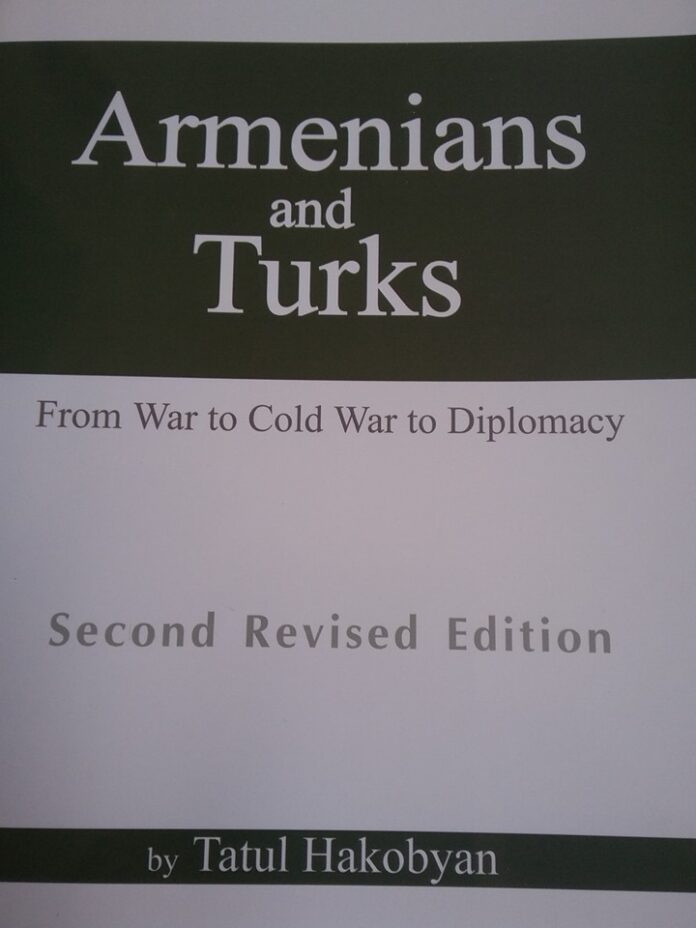Article 1 announced the establishment of peace and eternal friendship.
Article 2 identified the new boundary between Transcaucasia and Turkey. It ran along the eastern limits of the Akhaltsikh and Akhalkalak uezds, into the heart of the Alexandrapol uezd, atop Mount Aragats, then into the Etchmiadzin uezd as far as a road 4 miles west of the village of Etchmiadzin. From there the boundary continued along a line parallel to the Alexandrapol-Julfa railway until it reached a village 4 miles south of Yerevan, and finally moved southeastward, leaving much of Sharur-Daralagiaz and most of
Nakhijevan to Turkey, and attained the village of Alidjan, located on the Araxes River along the former Russo-Persian border.
Article 3 stipulated that the Ottoman government would be informed about any Armeno-Azerbaijani agreement on the mutual boundaries of the two republics.
Article 4 bound the Ottomans to give armed assistance at the request of the Armenian government for the maintenance of law and order.
Article 5 committed the Armenian government to take active measures to prohibit the formation of armed bands on its territory and to disperse all those which sought asylum there.
Article 6 provided for the unhindered religious and cultural freedom of Muslims in Armenia. The name of the ottoman sultan would be recited in the public prayers of the Moslems. Annex 3 of the treaty defined these freedoms in detail.
Article 7 arranged for future consular and commercial conventions. Until such time, diplomacy and commerce would be conducted on the basis of the “most-favored nation” principle. Annex 1 defined the privileges and obligation of the two contracting parties.
Article 8 approved low tariffs and provided for use of one another’s railways.
Article 9 sanctioned immediate restoration of postal and telegraph communications between the two countries.
Article 10 dealt with inhabitants along the frontier and border traffic. Annex 2 included detailed regulations on the subject.
Article 11 required the Armenian government to apply every possible means to evacuate all Armenian forces from Baku and to guarantee that no clashes would occur during that operation.
Article 12 certified that all Brest-Litovsk treaty provisions not incompatible with the present agreement were to be honored by both signatories.
Article 13 stipulates that troops occupying territory beyond the frontiers determined in Article 2 would be withdrawn after the treaty had been signed.
Article 14 specified that the treaty would come into effect upon exchange of ratifications, which was take place in Constantinople within one month.
Batum, June 4, 1918
Note [by Richard Hovannisian]: An additional treaty and a special agreement for the exchange of war prisoners were also concluded that day. It was the Batum Additional Treaty that attested to Armenia’s being a vanquished nation. The government of Armenia was compelled to demobilize all troops immediately, retaining only a limited force with specified zones of operation to be determined in consultation with the Ottoman Empire. These restrictions would remain in force until the establishment of world peace. All officers and civilian representatives of nations at war with the Central Powers were to be expelled from Armenia. Ottoman troops and materiel would be transported unhindered over Armenian territory. A special mixed commission would arrange for the use of roads and railways, and the Armenian government would be held responsible for any form of obstruction. Furthermore, the Ottoman Army reserved the right to utilize its own forces if the Armenians proved incapable of maintaining order and facilitating transportation. At the behest of Turkey, other Central Powers were to be granted any or all of the privileges outlined in the Additional Treaty, which, in contrast to the primary treaty, was to take immediate effect. The heel of the Ottoman Empire pressed heavily upon the 4,500 square miles of the Republic of Armenia.
* Richard G. Hovannisian, “Armenia on the Road to Independence, 1918,” University of California Press, Berkeley, Los Angeles, London, pp. 196-198













